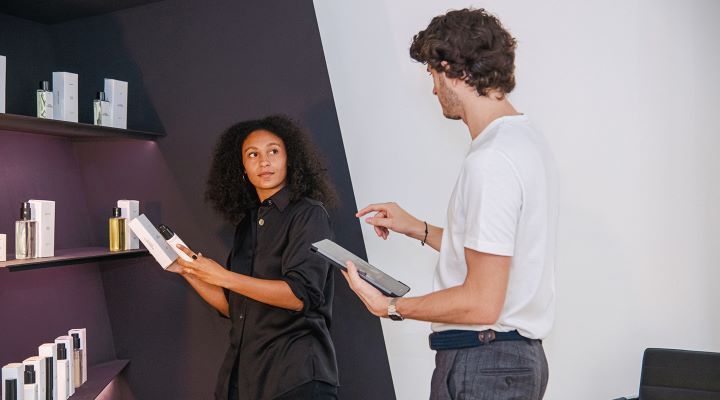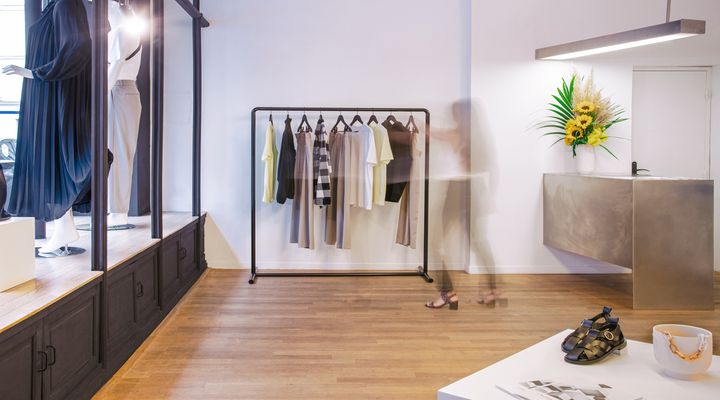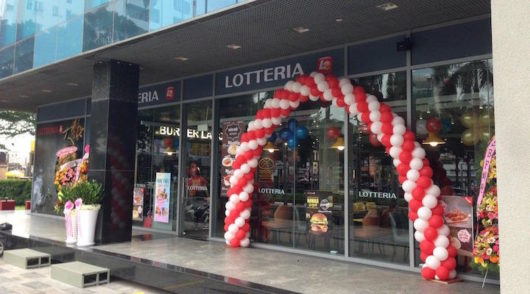Visual Merchandising (VM) is the great showman of retail, the ring-master tasked with capturing the audience and inviting them in. If done right, tickets to the show will be bought and the audience will settle in for the ride.
And just like the greatest show on earth, the spectacle of what goes on behind the scenes to produce these experiences is, at its best, a fine-tuned team of individuals and tools. All working hard to produce quality consumer engagement. Enticing, and delivering an array of touch-points that will keep consumers coming back.
The difference between good and great
Now, more than ever, the purpose of visual merchandisers is more than just their ability to physically implement change within a physical retail store. A good VM will know the brand DNA inside out, know product benefits and functionality back to front, and ultimately understand the consumer and their behaviours. A great visual merchandiser will also have the ability to strategically evaluate and analyse the numbers to improve sales and boost profits.
Working in sync with VM teams are the design and marketing teams, buyers, retail operations, e-commerce teams, strategists and analysts – all aiming to deliver the right mix of product and experience.
Someone who knows all too well the collaborative scope of working in retail is Russell Kavnat, CEO of Dashing. For the past 15 years, Russell has been focused on transforming Dashing from a printing business into one of Australia’s leading design, POS production and technology companies. Russell also knows a thing or two about the evolution of visual merchandising in retail, having worked with some heavy hitters like Adidas, Woolworths, David Jones, Country Road, Westpac, Lululemon and Lego.
I asked Russell, how he has seen visual merchandising practices within retail change over the last 15 years, and what is the most significant change he’s seen?
“The core of visual merchandising remains the same, which is to create an environment that complements the product and to tell a compelling brand story. I would say that there is now more emphasis on the importance of customising and personalising the story, and furthermore, reaching out to the customer in more direct and relevant ways.”
This has resulted in rounding out the customer experience of a brand, so what the customer sees, and experiences in-store is reinforced by their UX online and on social platforms.
There is certainly much more of a focus on the flagship store execution of VM, which is consequently encouraging more connection between us (design and production) and retailers’ hands-on VM teams.
“Within these flagships and tier-one stores, brands have dialled up their focus on interaction and brand experience for each consumer touchpoint, again requiring more engagement between us and the VM teams,” said Russel Kavnat.
The evolution of the VM’s skill set
Retail has come a long way and is rapidly ever-changing. Visual merchandising is at the coal face of change too. Today, most brands are looking for visual merchandisers that not only have the creativity and know-how to develop creative visual concepts and build attractive store displays, but they are also looking for the next generation of VM: teams that are equipped to work with tech solutions to increase their productivity, and enable them to work smarter, not harder.

It’s not enough anymore to creatively build a store display using products, moving shelves and racks, and countless hours to get it right, taking photos, sending the completed work to head office, and then waiting for compliance comments and feedback. In my experience, unless you have an integrated, smart system to allow better planning and communication flow for these in-real-time updates, the whole process slows down and work becomes inefficient.
Better Collaboration through tech
A faster-paced digital retail world means VM teams need to be aligned with the e-commerce strategy, and this often requires in-store simulations to be executed in a much faster turnaround time. The future of retail indicates there will not be much room for the old-school methods of store visits that take hours to complete. By having the right tech tools in place, not only VM benefits. Ultimately the bottom line benefits. There’s less lag time between floor moves. VM teams can work proactively, rather than wasting resources putting out fires.
Raphaelle Guigui, COO at IWD, a leading visual merchandising software company, explains: “E-commerce is booming, but traditional retail is here to stay. There is something irreplaceable about being able to walk into a store and see the display in person. You can touch the products, see what’s new and experience the brand identity as a whole.
“It’s a freedom that customers are looking for and we develop the right tools to help brand manager, VM, sales and marketing manager to plan their in-store strategy. Digitising their merchandising process can save up 80 per cent of their time.”
Over the past two years, with the pandemic obviously hitting physical retail hard, VM team headcounts have been reduced, and with travel being restricted, the smaller tiered stores are missing out on quality VM. Teams need effective tools to help stores they cannot get to physically. Advanced tech tools allow for higher quality output in smaller stores as needed. They link in-store retail teams with VM teams, buyers, in real-time SKU counts, allowing a smoother VM workflow and open communication.

There have been many high-street brands that have taken up the use of SAAS. Virtual store designer tools such as IWD are highly effective in supporting visual merchandising teams.
These tools are specifically adapted to VM requirements, to assist not only in field execution (efficient SKU counts), and basic planogramming, but also in allowing teams to simulate their stores’ VM displays faster, in 2D in 3D, and to share and communicate better across the board.
You can never replace the real-life players in the visual team – the hard-working performers that perfect their craft before the audience takes their seats and the curtain lifts – but you can improve their performance. These creative strategists are key to the navigation and application of these digital resources. They bring an eye for detail and creativity that AI can’t replace. By merging tech with human creativity the show will go on. This is the next generation of VM.






